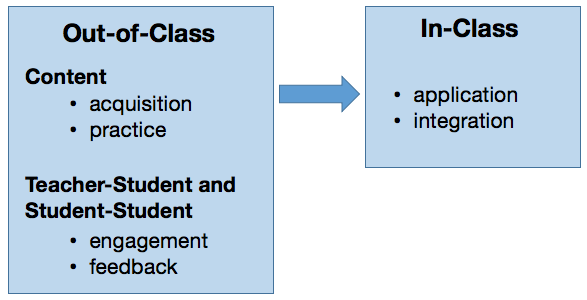Hybrid classes involve the same elements as traditional classes–things like reading, lecture, discussion, and activities–but with a reduced number of in-class meetings and therefore a greater emphasis on out-of-class resources and interactions.
 This out-of-class engagement can take many forms, including online tutorials and class discussion, or experiential learning activities that students must pursue in the “real world” and then report back to the class what they have learned.
This out-of-class engagement can take many forms, including online tutorials and class discussion, or experiential learning activities that students must pursue in the “real world” and then report back to the class what they have learned.
Because class meetings are less frequent, it becomes much more important that class-time be as active and interactive as possible, to maximize both student learning and the diagnostic information that activities can provide you about what your students are really understanding (or not).
Several programs at Northeastern make use of the hybrid format to engage students deeply and in ways they otherwise could not. Here’s how faculty in these programs have made good use of the format. Watch the video below.
Hybrid course design involves the same design process as flipping your course:
- considering first what you want your students to do in class to apply course concepts, then
- determining what kinds of out-of-class resources they’ll need to prepare them for those in-class activities, and
- what forms of ongoing accountability and feedback will motivate them to stay engaged along the way.
